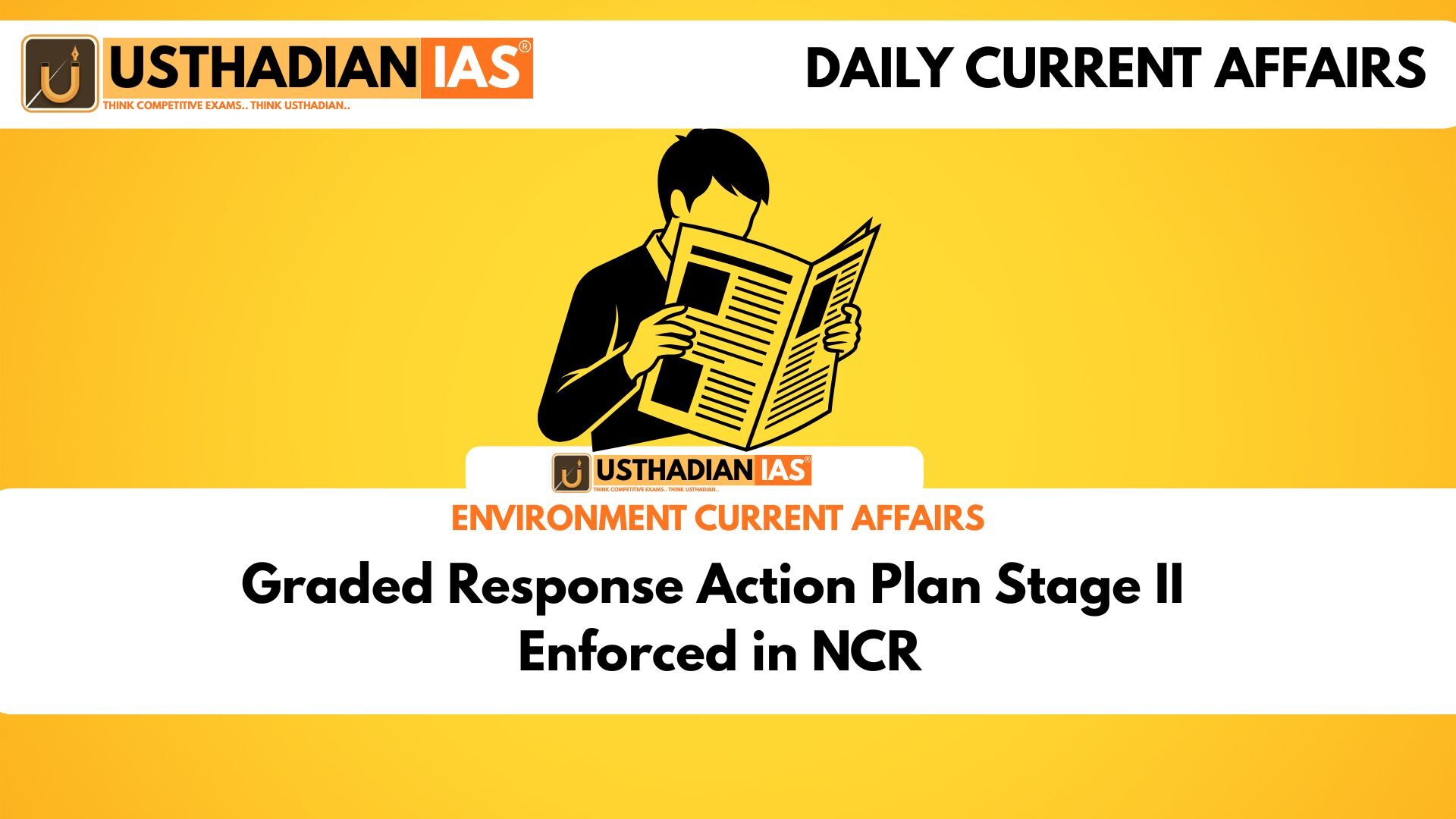CAQM Action on Rising Air Pollution
Graded Response Action Plan Stage II Enforced in NCR: The Commission for Air Quality Management (CAQM) has invoked Stage II of the Graded Response Action Plan (GRAP) across the National Capital Region (NCR) as air quality continues to deteriorate. This step was taken after the Air Quality Index (AQI) moved into the ‘Very Poor’ category (AQI 301–400), triggering stricter anti-pollution measures.
Measures Under Stage II
Under Stage II of GRAP, several preventive actions are enforced to control emissions. These include restrictions on the use of coal and firewood, along with limitations on diesel generator operations. Construction and demolition activities generating dust are also monitored closely. The aim is to minimize particulate matter emissions that contribute to Delhi’s annual winter smog crisis.
Static GK fact: GRAP was first implemented in Delhi in 2017 as part of the National Clean Air Programme (NCAP).
Understanding GRAP Mechanism
The Graded Response Action Plan is an emergency framework designed to combat air pollution based on real-time AQI levels. It classifies the situation into four escalating stages:
- Stage I: Poor (AQI 201–300)
- Stage II: Very Poor (AQI 301–400)
- Stage III: Severe (AQI 401–450)
- Stage IV: Severe+ (AQI 451 and above)
Each stage carries predefined control measures to reduce pollution sources. The CAQM Sub-Committee on GRAP regularly reviews data from air quality monitoring stations and decides when to escalate or withdraw stages.
Static GK Tip: GRAP replaced the earlier Environment Pollution (Prevention and Control) Authority (EPCA) system in 2021.
Why Delhi’s Air Quality Worsens in Winter
Every year, Delhi faces a sharp decline in air quality during the post-monsoon and winter months due to a combination of meteorological and anthropogenic factors:
- Temperature inversion traps pollutants near the surface.
- Low wind speed restricts the dispersion of particulate matter.
- North-westerly winds carry dust from Rajasthan, Pakistan, and Afghanistan.
- Stubble burning in Punjab and Haryana adds large quantities of smoke to the atmosphere.
- Additional sources include vehicular emissions, industrial discharge, and construction dust.
Static GK fact: The phenomenon of temperature inversion occurs when cool air near the ground is trapped beneath a layer of warm air, preventing vertical mixing.
National Air Quality Index Overview
The National Air Quality Index (AQI), launched in 2014, provides a unified measure of air quality for Indian cities. It classifies air quality into six categories — from Good (0–50) to Severe (400–500) — based on the concentration of eight key pollutants: PM10, PM2.5, NO₂, SO₂, CO, O₃, NH₃, and Pb.
Static GK Tip: India’s first continuous air quality monitoring station was set up by the Central Pollution Control Board (CPCB) in Delhi.
Static Usthadian Current Affairs Table
Graded Response Action Plan Stage II Enforced in NCR:
| Topic | Detail |
| Implementing Authority | Commission for Air Quality Management (CAQM) |
| Legal Framework | Commission for Air Quality Management in NCR and Adjoining Areas Act, 2021 |
| Stage Invoked | Stage II (Very Poor category) |
| Major Restrictions | Coal and firewood ban, limits on diesel generators |
| AQI Launched | 2014 |
| Number of AQI Categories | Six |
| Pollutants Considered | PM10, PM2.5, NO2, SO2, CO, O3, NH3, Pb |
| Replaced Body | Environment Pollution (Prevention and Control) Authority |
| Major Cause of Pollution | Stubble burning, vehicular emission, dust |
| Monitoring Agency | Central Pollution Control Board (CPCB) |








